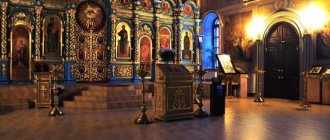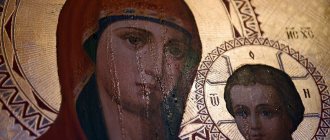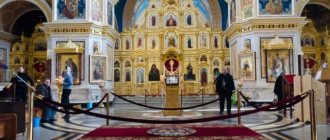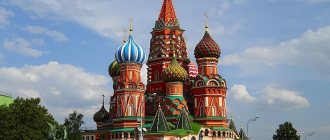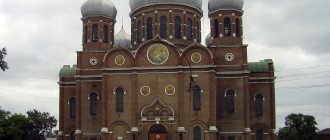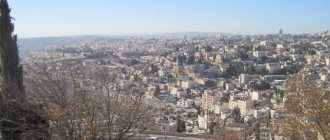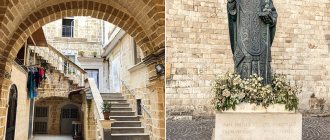General information
Suzdal is the complete opposite of modern megacities. There are practically no industrial enterprises here, the air does not contain harmful emissions, and beautiful natural landscapes have been preserved all around.
The only production on the territory of the settlement is the brewing of mead. Historically, the drink began to symbolize the city, so demand for it among tourists is always high. Mead is made only from natural products according to a traditional recipe.
Suzdal stands out from the rest of the cities of the Golden Ring, for example, Yaroslavl, in that it is almost entirely a museum and an architectural monument. To preserve the historical appearance, it is prohibited to build high-rise buildings in it - a maximum of 3 floors. Industrial enterprises and hazardous industries are not located within the city and its surroundings so that the air remains clean and the nature remains beautiful.
In Suzdal there are over two hundred architectural monuments dating from the 12th to the 19th centuries. Anyone can visit the open-air museum and learn the history of each of them. Some historical buildings and structures have become settings for artistic paintings, including:
- "Andrey Rublev."
- "The Marriage of Balzaminov."
- "The Ballad of a Soldier"
- "Young Russia."
- "The Youth of Peter".
It would take a long time to list them as part of a report on Suzdal, and artists will write more than one script and make more than one film about this place.
Churches and monasteries appeared here one after another since the 16th century. Gradually they were united into monastic complexes. Gradually the city began to turn into the religious center of the country. During the years of the USSR, many of them were destroyed. The surviving buildings have been restored: the domes once again shine over the city, and the ringing of church bells fills the surrounding area.
Sights of Suzdal
The most visited attraction in Suzdal, of course, is the Suzdal Kremlin , about which we had a separate article. But besides this, there is a lot to see in this small city.
Gostiny Dvor in Suzdal – Shopping arcades
Not far from the Kremlin there is Suzdal Posad or, as it is also called, Gostiny Dvor. Even before the construction of shopping arcades, fairs and other important events of the city took place in this place. Stone shopping arcades appeared in Suzdal at the beginning of the 19th century and became a very popular place among residents. People came here not only for shopping - the stone galleries of the Gostiny Dvor were very popular with the local rich, who came here on the promenade to show off themselves and look at others.
But the main purpose of the rows was, of course, trade. There were about a hundred different shops here where you could buy various goods. Gostiny Dvor was the largest in size, and no other district settlement could compare with Suzdal. In 1924, the southern part of the shopping arcade was dismantled and restored only in the 1970s. Now here, like two centuries ago, there are small shops, restaurants and cafes.
By the way, the famous tasting room of Suzdal mead is located in the shopping arcade building. Here you can try and buy different varieties of this unusual drink; there is even a special non-alcoholic mead.
Resurrection Church in Suzdal
In the main square of the city, one cannot help but pay attention to the Church of the Resurrection. A wooden church appeared on this site in the 16th century, but during a fire in 1719 it was destroyed. In just one year, the church was restored, since the Church of the Resurrection was considered the most important in the city, all clergy who came to Suzdal first went here.
Kazan Church in Suzdal
Next to the Church of the Resurrection there is a winter temple of the shopping area - the Church of the Kazan Icon of the Mother of God. The wooden church standing on this site, like the Church of the Resurrection, was destroyed during a fire in 1719, but apparently this temple was not so revered, so it was restored only 20 years later, in 1739.
Church of the Entrance to Jerusalem
Another temple in the city center is the Church of the Entrance to Jerusalem, built in 1707. This temple has an unusual appearance: it is quite compact and has five domes (they were restored in the 1990s).
Pyatnitskaya Church in Suzdal
The modern Pyatnitskaya Church was built in the center of Suzdal in 1772 next to the summer Church of the Entrance to Jerusalem and for a long time was called Nikolskaya.
A small path leads along the temple, from which a stunning view of the floodplain meadow of the Kamenka River opens.
And if you look closely, you can see the domes of the Suzdal Kremlin and the Assumption Church.
Churches of Suzdal
There are not just many churches in Suzdal, but a lot - they are literally at every turn and each of them has its own history, its own unique appearance. It is quite difficult to get around them all, so we were able to explore only a few of them located in the city center.
Of course, all of them deserve attention and a separate article, which may someday appear on the pages of our portal.
Most of the temples are active and maintained, but there are also abandoned ones. Among them is the Church of Boris and Gleb. Once upon a time, so long ago that even historical documents did not preserve this date, there was a monastery in Suzdal, located on the site of the Boris and Gleb Church. History has not preserved in memory not only the date of foundation of the monastery, but also the name of its founder.
It is only known that in 1578, according to the decree of Ivan the Terrible, it was decided not to take any duties from this monastery. The documents also preserve information about the abolition of the monastery in 1764. There is a version that the temple that has survived to this day was built in 1749. They say that ancient paintings were preserved inside, but we were unable to get inside - all visible entrances and exits were boarded up. In general, the temple is in a deplorable state, but there is hope that someday its reconstruction will begin.
Museum of Wooden Architecture in Suzdal
One of the most visited attractions in Suzdal, along with the Kremlin, is the Museum of Wooden Architecture. Of course, it deserves a large separate article , because there are many exhibits in the museum and each deserves its attention.
The Museum of Wooden Architecture is located at the address: Suzdal, Pushkarskaya Street. There is a small parking lot in front of the museum, which is almost never empty, so it is best to leave the car in the city center and walk from the Suzdal Kremlin along the wooden pedestrian bridge over Kamenka.
As you might guess, entrance to the museum is paid. Ticket price for adults is 200 rubles, and students, pensioners and schoolchildren must pay 80 rubles. The museum territory is open to visitors daily from 9:00 to 19:00, and on Saturdays until 21:00.
True, you can only get inside the wooden houses at 19:00.
There are quite a few such museums, and we personally visited a similar museum in Kostroma and in the suburbs of Minsk, but of them, it was the Suzdal Museum of Wooden Architecture that we liked the most.
Holy Intercession Convent
In the northern part of Suzdal there is, in our opinion, one of the most beautiful monasteries in the city, which is definitely worth a visit - the Holy Intercession Convent, founded back in 1364. It is famous for the fact that it was here that annoying or guilty queens were often exiled.
Useful: Houses in Suzdal for daily rent - for the New Year or birthday
Among them, especially famous are Princess Alexandra - the daughter of Ivan III from his first marriage, Princess Sophia - Vasily's wife, who was sent to a monastery because she could not have children, Anna Vasilchikova - one of the many wives of Ivan the Terrible, Evdokia Lopukhina - wife Peter I. In the 16th-17th centuries it was believed that this was one of the largest women's monasteries in Rus'.
We will not talk in detail about this monastery now, since we plan to write a separate article where we will describe its interesting details and the life of the “monastery prisoners”.
Monastery of Saint Euthymius
Not far from the Intercession Monastery there is another monastery interesting from a historical point of view, but this time for men - the Spaso-Evfimiev Monastery. It was founded in 1352 and was supposed to serve as a defensive fortress.
Indeed, the monastery is very similar to a powerful fortress: thick fortress walls, high towers. Initially, it was called Spaso-Preobrazhensky, but later it was renamed in honor of St. Euthymius of Suzdal and became known as the Euthymius Monastery.
Like the Intercession Monastery, this monastery has a history that deserves a separate large article. Unfortunately, it’s not possible to talk about it in a few sentences.
Let's just say that on the territory of the monastery there was a prison for quite a long time, in which prisoners driven to madness were kept, among them the Decembrist Fyodor Shakhovsky and the famous predictor Abel. In Soviet times, there was a political prison here, whose prisoners were Bishop Alexander Boyarsky, Metropolitan Peter of Krutitsky, as well as various Komsomol and party leaders.
During the Great Patriotic War, a filtration camp was organized here to accommodate Red Army soldiers returning from Nazi captivity. Later, a prisoner of war camp was located in the Spaso-Evfimiev Monastery, where the highest ranks of the Italian, Romanian, Hungarian and Spanish armies were kept. For example, it was here that the famous General Friedrich Paulus was detained.
The Spaso-Evfimiev Monastery, along with the Suzdal Kremlin, the white-stone churches of Vladimir and the Church of the Intercession on the Nerl, is included in the list of UNESCO World Heritage , and as you probably know, this respected organization will not advise anything bad, especially with regard to the sights of Russia.
Monasteries of Suzdal
In addition to the two monasteries that we described above, in Suzdal it is also worth checking out the Alexander, Vasilyevsky and Robe Deposition monasteries. These are only those five monasteries that have survived to this day, and there were also Borisoglebsky (abolished in 1764), Vvedensky (burned by Batu), Dmitrievsky Pechersky (closed in 1764), Kozmodamiansky and Trinity (also closed in 1764) monasteries .
Ilyinsky meadow
Ilyinsky Meadow can hardly be called a landmark of Suzdal - it would seem to be an ordinary field, on which there could hardly be anything interesting. Meanwhile, its territory is home to more than 120 species of different birds, 60 species of seagulls alone, but this will be of interest only to ornithologists. However, we highly recommend stopping by here if you are traveling by car, because it offers stunning views of Suzdal and its attractions.
Short story
The first mention of the settlement dates back to 1024 in the Tale of Bygone Years. It is considered the year of the founding of Suzdal. There is a version that the name comes from the word “create”, but historians do not have a consensus on this matter.
Written sources preserve information about the rapid development of the settlement, which by the middle of the 11th century became a craft center and a venue for large fairs. Geographical location played a significant role in this. Suzdal is located on the banks of the river. Kamenka , along which trade caravans passed, which became the first source of income for the settlement.
In a bend of the river, archaeologists have found the remains of ancient defensive structures that are more than a thousand years old. At first, a settlement of the ancient Slavs was located on this site. The coming to power of Prince Yuri Dolgoruky led to the formation of the Rostov-Suzdal principality with its center in Suzdal.
Over time, Vladimir became the capital city, and Suzdal became the center of the principality of the same name.
The description of the history of the cultural center consists of more than just blank pages. In the 13th century, the Mongol invasion turned into disaster: the city was burned to the ground, and almost all the inhabitants were killed or captured. Behind the walls of the Robe Monastery, the few surviving residents of Suzdal escaped from the enemy.
During the Time of Troubles, interventionists came and took away all the valuables from the city. History has presented other challenges:
- Attack of the Crimean Tatars.
- Two major fires.
- A terrible plague epidemic that practically devastated Suzdal.
Over time, the role of the economic center was lost, but thanks to this, architectural monuments and the atmosphere of the ancient Russian city were preserved. The city acquired county status in 1778.
Trade routes passed through the city. Merchants transported goods from Moscow to St. Petersburg, Arkhangelsk and Zaustyuzhie. Until the end of the 19th century, it remained the capital of street vendors.
In 1974, the city was awarded the “Badge of Honor” for preserving its identity and developing cultural tourism.
Hotels in Suzdal - hotels
Since Suzdal is a tourist city, there are no problems with hotels, hostels and rented apartments. Recently, many tourists recommend the Pushkarskaya Sloboda hotel ; prices for a room in this hotel start from 3,000 rubles. The hotel is really good, but too pretentious for our taste. We prefer something simpler and cheaper, so we prefer to rent an apartment on the Airbnb website ( detailed instructions on how to rent an apartment for one day), and if you register there using our link , you can get a real $20 discount on your first booking.
